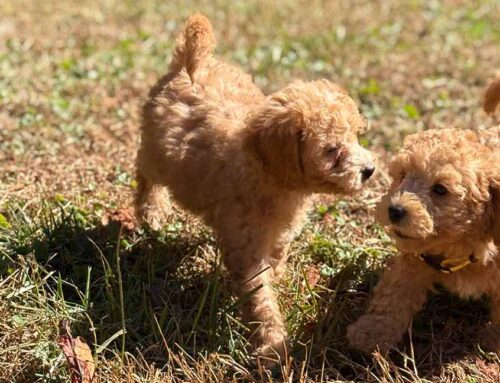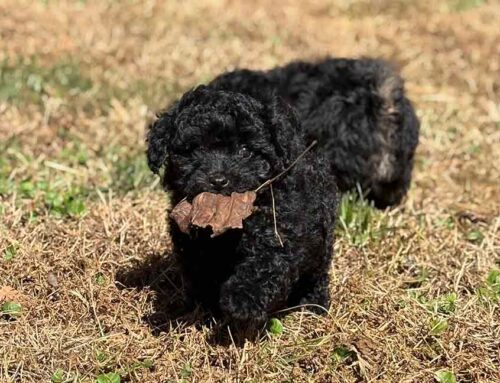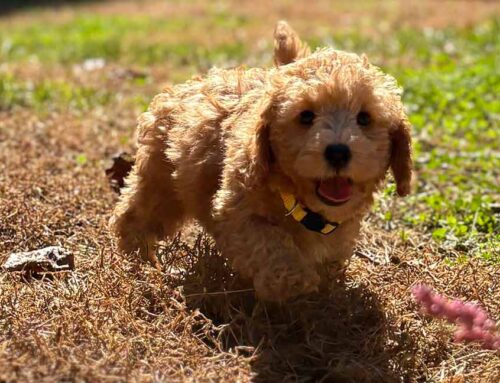
Cavapoo Shedding: What to Expect and How to Manage It
Hey there, prospective puppy parents! As a breeder, some of the most common questions I get are about Cavapoo shedding. When bringing a Cavapoo into your family, it’s natural to want to know everything about their coat and how much they shed.
Cavapoos, the adorable mix between Cavalier King Charles Spaniels and Poodles, are often known as a low-shedding breed. However, like any dog, some shedding could be expected.
For those who usually struggle with allergies, you will be glad to hear that the Poodle’s unique hypoallergenic coat transfers over to the Cavapoo, meaning minimal to no shedding or allergens.
My family can personally vouch for how wonderful the Cavapoo is for us! I raised three boys who all wanted dogs but were all allergic. 16 years later, there hasn’t been a single allergic reaction in my home or from raising these lovable pups at Jones Farm Puppies!
However, like any dog, some shedding is to be expected. I want to walk you through what to expect with Cavapoo shedding and share some practical tips on managing it so you can enjoy your time with your furry friend without constantly worrying about fur all over your home.
 The Genetics Behind Cavapoo Shedding
The Genetics Behind Cavapoo Shedding
Both of its parent breeds influence a Cavapoo’s shedding pattern. The Cavalier King Charles Spaniel is a moderate shedder, while the Poodle is known for its non-shedding coat. When these two are combined, the resulting Cavapoo’s coat can range from almost non-shedding to non-shedding, depending on which genes are more dominant.
Some Cavapoos may inherit the non-shedding Poodle coat, while others have minimal shedding due to their Cavalier side. In either case, Cavapoos tend to shed far less than most other breeds, but understanding the variation within the breed helps set realistic expectations.
Genetics that can affect the Cavapoo Shedding
The primary difference between F1 and F1b Cavapoos lies in their breeding and genetic makeup: an F1 Cavapoo is a first-generation crossbreed resulting from a purebred Cavalier King Charles Spaniel and a purebred Poodle, giving it a 50/50 genetic split, often leading to a wavy or loosely curled coat that may shed slightly and is less likely to be hypoallergenic and possibly more shedding. In contrast, an F1b Cavapoo is bred by crossing an F1 Cavapoo back with a purebred Poodle, increasing the Poodle genetics to about 75%, which typically results in a curlier, low to non-shedding coat that is more suitable for people with allergies; F1b Cavapoos may also exhibit more Poodle-like characteristics in appearance.
Cavapoo Coat Types and Their Influence on Cavapoo Shedding
The type of coat your Cavapoo inherits can also affect the amount of shedding. Cavapoos generally come with one of three coat types: curly, wavy, or straight. Here’s a quick breakdown:
- Curly coats (influenced by the Poodle genes): These Cavapoos are non-shedding.
- Wavy coats: These can tend to shed lightly but are still manageable. Regular grooming and a great quality Salmon oil will help keep shedding under control.
- Straight coats (influenced by the Cavalier genes): Cavapoos with straight coats may shed slightly more than their curly or wavy-coated counterparts. However, this shedding can also be managed effectively with a great quality Salmon Oil and a solid grooming routine.
Stages of Cavapoo Coat Development
Cavapoos undergo a few coat changes as they grow from puppies to adults. Initially, Cavapoo puppies have a soft, fluffy coat, which is often low-shedding. As they mature, around six to twelve months old, Cavapoos start developing their adult coat. This transition can temporarily increase shedding, especially if the adult coat is thicker or denser than the puppy coat. Once their adult coat has fully developed, shedding levels typically stabilize.
 How Much Is Cavapoo Shedding Compared to Other Breeds?
How Much Is Cavapoo Shedding Compared to Other Breeds?
If you’ve previously owned breeds like Golden Retrievers, German Shepherds, or Labradors, you’ll likely find Cavapoo shedding extremely minimal by comparison. Cavapoos shed significantly less than high-shedding breeds but, like all dogs, are not entirely “no-shedding.”
In the world of dog coats, Cavapoos offer a happy medium. They’re low/non-shedding enough to suit most allergy-sensitive families and manageable for people who want less dog hair around their homes. Setting these realistic expectations will help you enjoy life with your Cavapoo more fully.
Factors That Can Affect Cavapoo Shedding
Although genetics play a large role, other factors can influence the amount of shedding you’ll experience with your Cavapoo.
Seasonal Shedding
Like most dogs, Cavapoos may shed more during seasonal changes in spring and fall. During these times, dogs naturally shed their lighter summer coat for thicker winter coats or vice versa. You might notice a slight increase in shedding, even if your Cavapoo is typically low-shedding. Routine grooming and a little extra brushing can help keep shedding in check during these seasonal transitions.
Health and Diet
A Cavapoo’s health and diet directly impact their coat’s condition. Like with us, good nutrition appears in a dog’s skin and hair. A diet rich in omega-3 fatty acids, vitamins, and minerals can promote a healthy, shiny coat and minimize shedding. Excellent quality food and Salmon Oil will make a big difference! Nutritional deficiencies, allergies, or certain skin conditions can lead to increased shedding or even patchy fur loss.
Consider including the following in your Cavapoo’s diet for optimal coat health:
- Fish oils or omega-3 supplements
- High-quality protein sources
- Foods rich in vitamins like vitamin E, biotin, and zinc
Stress and Cavapoo Shedding
Cavapoos are affectionate, family-oriented dogs that can experience stress or anxiety due to environmental changes. Stress factors like moving to a new home, changes in family dynamics, or separation anxiety can lead to increased shedding. Creating a calm and predictable environment for your Cavapoo will help reduce stress-induced shedding. Spend quality time with them, and establish consistent routines to help them feel secure.
Practical Tips for Managing Cavapoo Shedding
While Cavapoos don’t shed much, regular grooming and care will help minimize fur around your home.
Establish a Grooming Routine
A consistent grooming routine is key to managing shedding with any breed, and Cavapoos are no exception. Regular brushing helps remove loose fur before it can fall around your home. Here’s a quick rundown of grooming essentials for Cavapoos:
- Brush: For wavy or straight coats, use a slicker brush or a de-shedding brush. For curly coats, a pin brush can help detangle without damaging the curls.
- Comb: A fine-toothed comb works well for areas around the ears and face where Cavapoos may get matting.
- Deshedding tool: These can be useful for Cavapoos with wavy or straight coats, helping to reduce shedding and keep their coat in top shape.
A good rule of thumb is to brush your Cavapoo a few times a week or even daily if they have a straighter coat and you notice more shedding.
Brushing Techniques for Different Coat Types
To make the most of brushing time, use techniques tailored to your Cavapoo’s coat type:
- Curly coats: Brush in sections, lifting the curls to get down to the skin. Focus on detangling without pulling.
- Wavy coats: Brush in the direction of the coat’s natural flow, and use a de-shedding tool gently to remove any loose hairs.
- Straight coats: Use a slicker brush and start close to the skin, working outward. A few times a week should be enough to keep shedding minimal.
Bathing Tips
Bathing your Cavapoo once every 2-4 weeks can help remove excess fur and keep their coat smelling fresh. Choose a gentle shampoo for their skin, like a hypoallergenic or moisturizing formula. Avoid over-bathing, as it can dry out their skin and increase shedding. Always dry their coat thoroughly after a bath to prevent matting and tangling.
 Keeping Your Home Clean Despite Cavapoo Shedding
Keeping Your Home Clean Despite Cavapoo Shedding
A little preparation and the right tools can make it easy to keep your home fur-free.
Using the Right Tools
Investing in the right cleaning tools can help you stay ahead of shedding. Here are some of the basics:
- Vacuum: A vacuum with a pet hair attachment can make quick work of fur on carpets and furniture.
- Lint rollers are handy for furniture, clothes, and quick clean-ups.
- Furniture covers: Pet-friendly furniture covers can be easily washed, making them a great choice for areas your Cavapoo frequents.
Setting Up a Pet-Friendly Zone
Designating a specific area in your home for your Cavapoo can help contain shedding. This might be a cozy corner with a dog bed and blankets, which can be washed regularly. Keeping their bed and blankets clean will reduce the spread of fur, keeping the rest of your
home more fur-free.
Managing Allergies
If you or someone in your family has allergies, managing Cavapoo shedding becomes even more critical. Regular vacuuming, washing their bed and blankets, and using air purifiers with HEPA filters can significantly reduce allergens. A low-shedding Cavapoo can make a good choice for allergy sufferers, but these extra steps can help make their presence easier on the family.
When to Consult a Vet About Cavapoo Shedding
It’s important to recognize what shedding is normal and when it might be a sign of an underlying health issue.
Recognizing Abnormal Shedding
If you notice bald or hot spots, irritated skin, or excessive scratching, it’s best to consult a vet. These symptoms could indicate allergies, hormonal imbalances, or even skin infections. Addressing these issues early will help keep your Cavapoo comfortable and healthy.
Treatment Options for Excessive Shedding
Depending on the cause, we recommend dietary changes, medicated shampoos, or supplements to address excessive shedding. It’s crucial to consult your breeder before introducing any new treatment or supplement to ensure it’s safe and effective for your Cavapoo.
Cavapoos bring so much love and joy into our lives, and managing their shedding is just part of caring for them. With consistent grooming, good nutrition, and a few tricks for keeping your home clean, you’ll hardly notice any fur they leave behind.
As an ethical breeder, I’d love to help you find the perfect Cavapoo for your family. If you’re considering adding a Cavapoo to your home, feel free to explore our available puppies page, where you can learn more about our puppies and see if one might be the right fit for you.
And if you have any questions about Cavapoos or how we raise our puppies, please don’t hesitate to contact us. We’re here to guide you in making an informed, thoughtful decision as you welcome a new furry family member into your life.
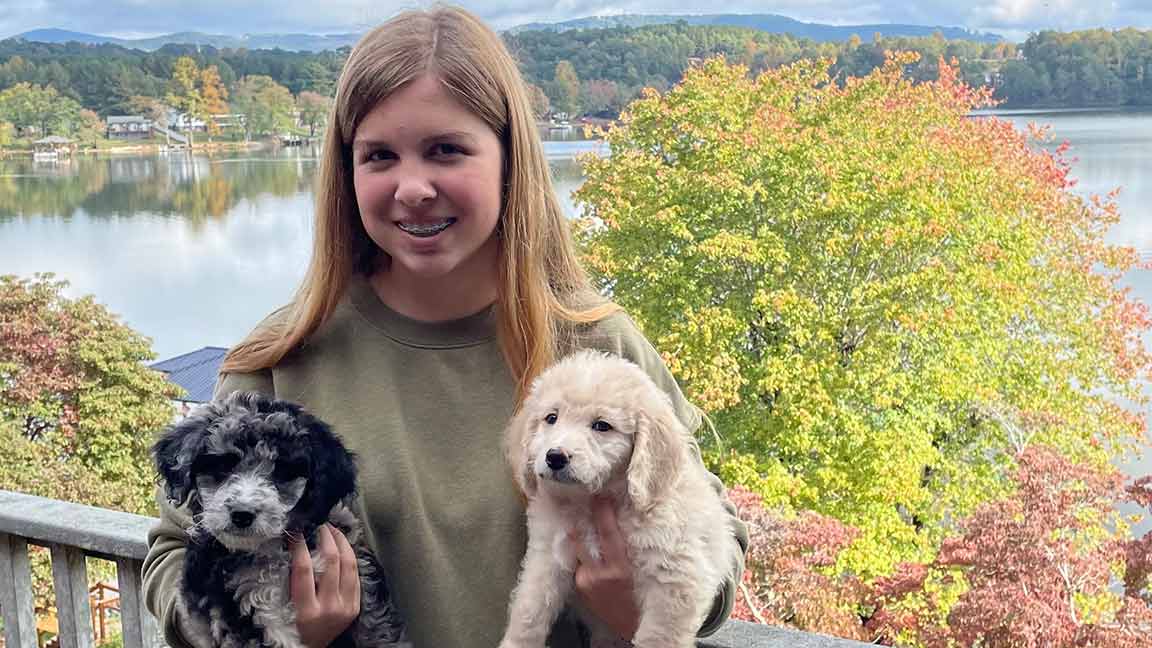
FAQ
Are Cavapoos hypoallergenic?
Cavapoos are often described as a hypoallergenic breed, but it’s essential to understand that no dog is completely hypoallergenic. Cavapoos are low/non-shedding, which means they produce fewer allergens than high-shedding breeds. However, individuals with severe allergies may still react to a Cavapoo. Regular grooming and keeping their environment clean can help reduce allergens in the home.
How often should I groom my Cavapoo to control shedding?
Brushing a few times a week is ideal for most Cavapoos, especially those with wavy or curly coats that tend to trap loose fur. Straight-coated Cavapoos may benefit from more frequent brushing. Regular grooming not only keeps shedding manageable but also reduces tangles and matting.
Will my Cavapoo shed more as they get older?
Shedding levels may fluctuate throughout a Cavapoo’s life. Puppies usually shed very little, but you might notice an increase as they transition to their adult coat. Shedding levels generally become more predictable once they settle into their adult coat. Health issues or environmental factors could influence shedding as they age, so routine check-ups are always a good idea.
What should I do if my Cavapoo is shedding more than usual?
If you notice an unusual increase in shedding, check for any signs of skin irritation, bald spots, or excessive scratching. These could be signs of allergies, diet deficiencies, or skin conditions. A visit to the vet is recommended to rule out any underlying health issues and find a solution that works for your Cavapoo.
Do Cavapoos need professional grooming?
Yes, many Cavapoo owners find that periodic professional grooming—about every 4-8 weeks—helps maintain a healthy coat. Professional groomers can trim and style their coat, especially if it’s curly or prone to matting. Additionally, groomers often provide services like nail trimming and ear cleaning, which support overall health.
Are there specific grooming products you recommend for Cavapoos?
Hypoallergenic and moisturizing shampoos are often recommended for Cavapoos to prevent dry skin. Essential tools are a slicker brush for detangling, a pin brush for curls, and a fine-toothed comb for sensitive areas. Always consult a groomer or vet if unsure which products best suit your Cavapoo’s coat type and skin needs.
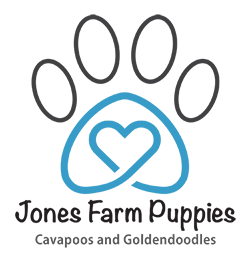
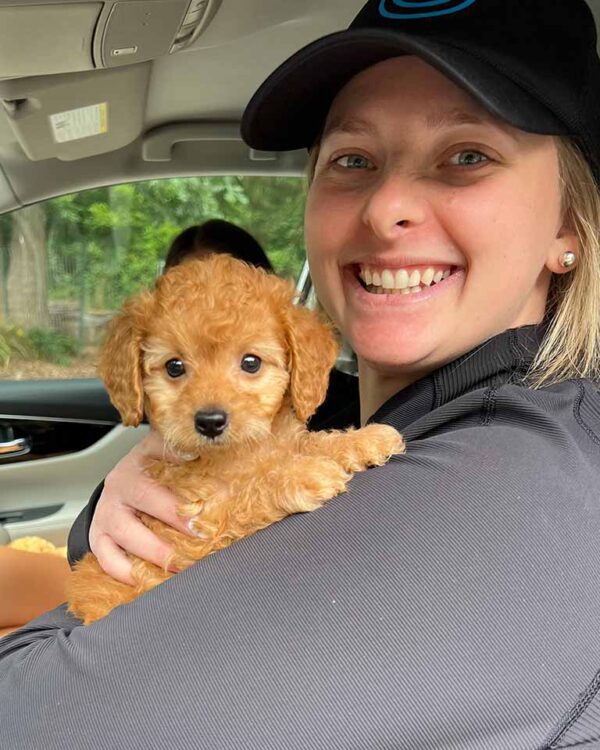 The Genetics Behind Cavapoo Shedding
The Genetics Behind Cavapoo Shedding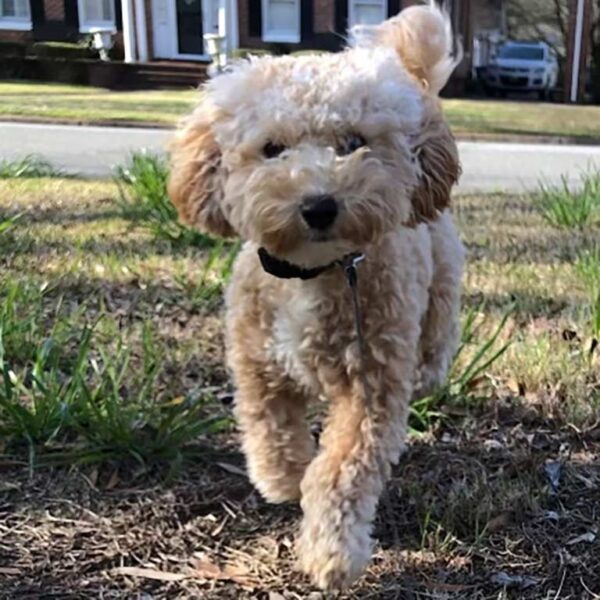 How Much Is Cavapoo Shedding Compared to Other Breeds?
How Much Is Cavapoo Shedding Compared to Other Breeds?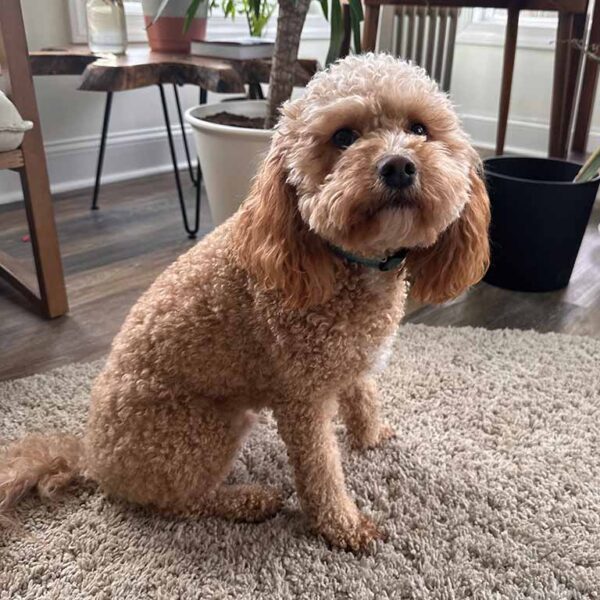 Keeping Your Home Clean Despite Cavapoo Shedding
Keeping Your Home Clean Despite Cavapoo Shedding